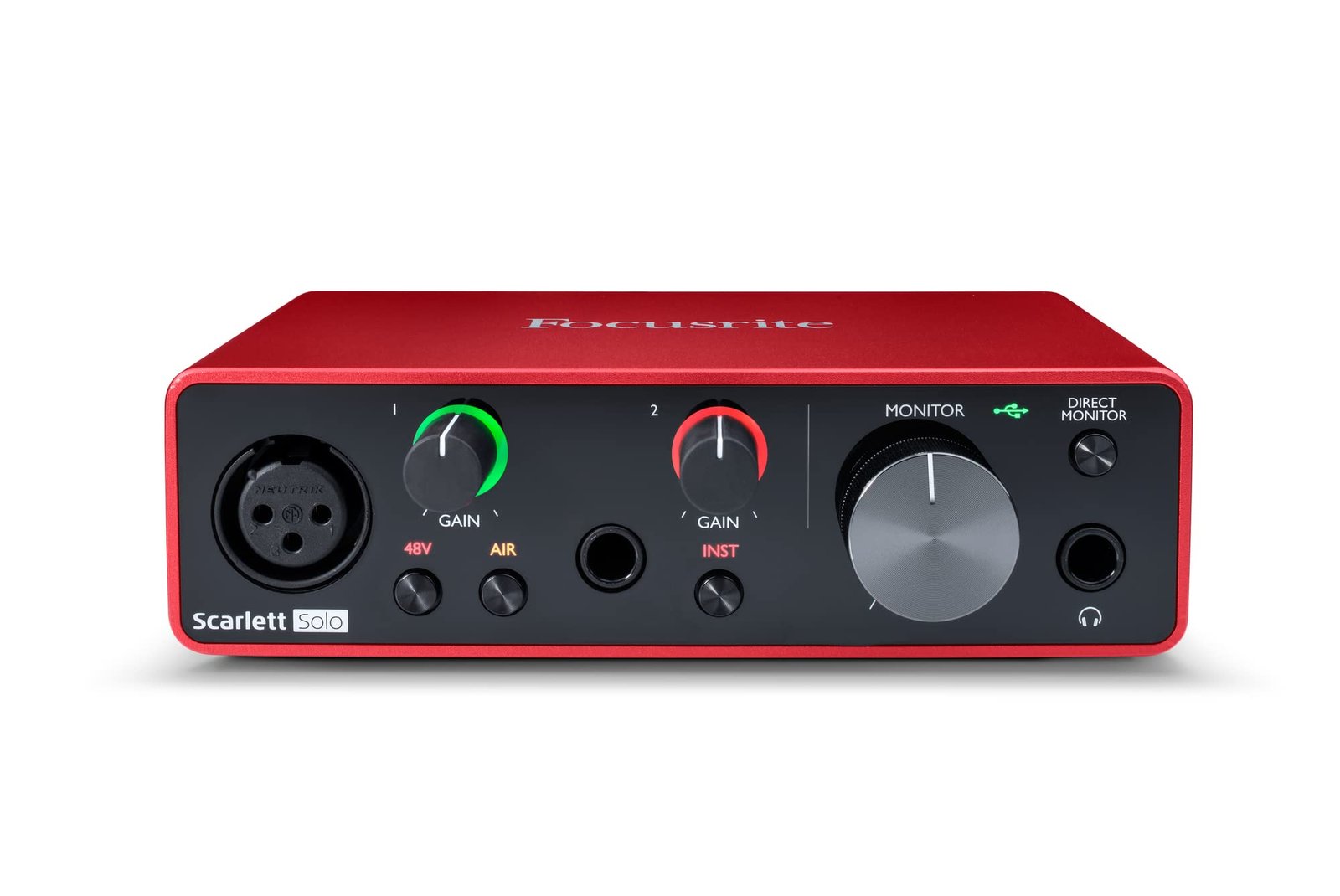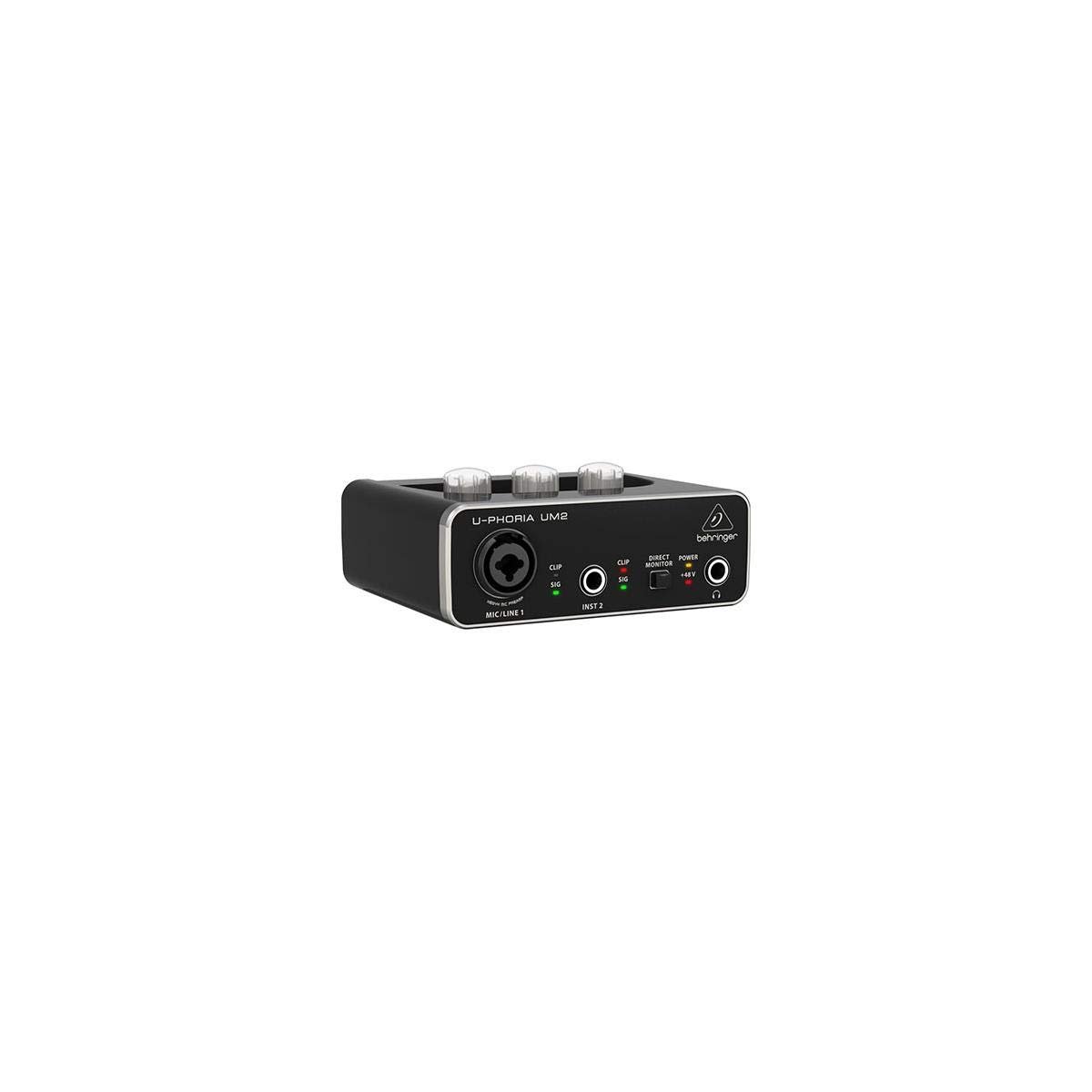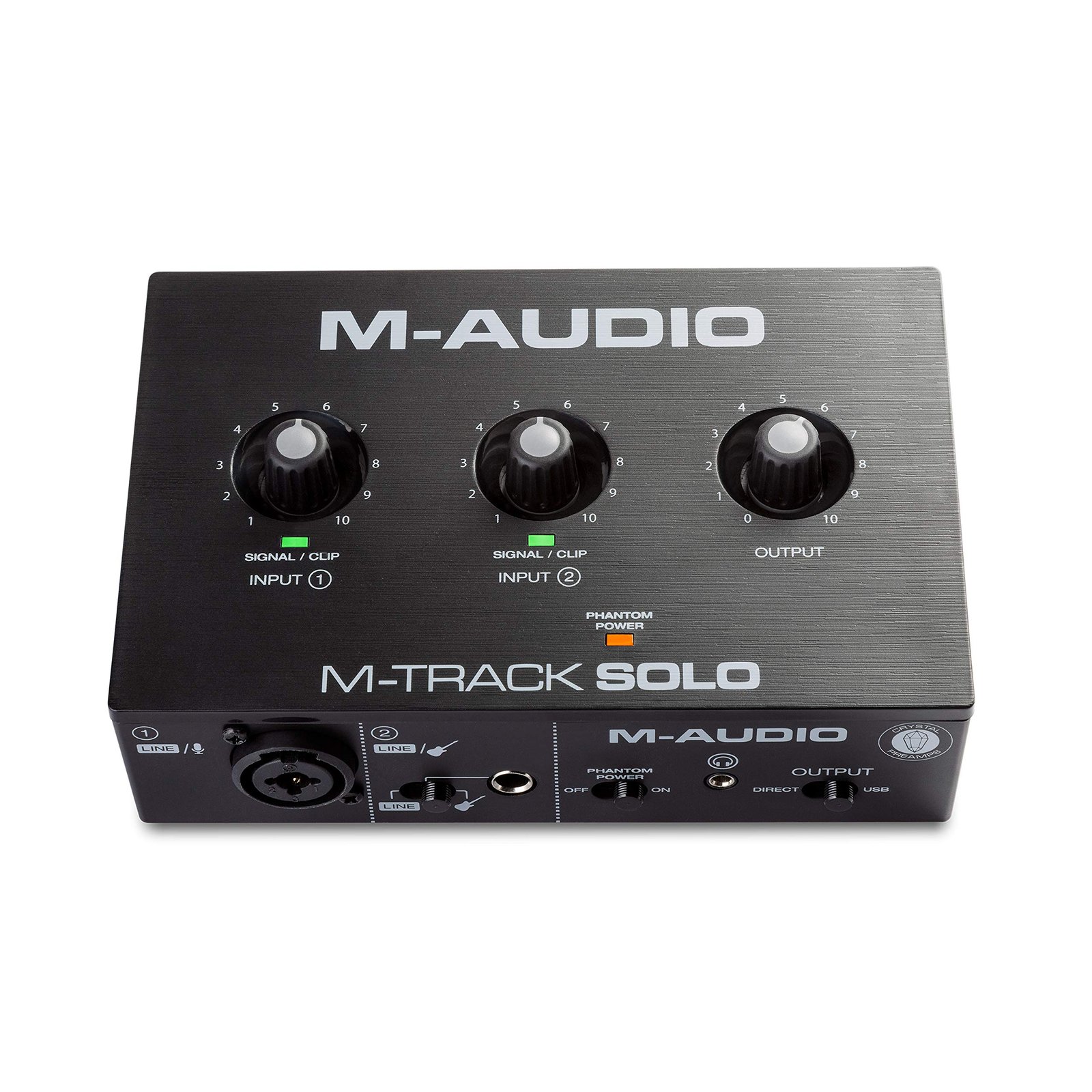When you’re setting up a home studio or looking to enhance live performances, performance audio interfaces are key pieces of equipment that bridge the gap between your instrument or microphone and your computer.
These interfaces convert analog signals to digital signals, allowing you to record high-quality audio with ease.
They are designed to handle various tasks, from basic audio recording to more complex projects like multi-track recordings for bands or live settings.
Using a performance audio interface improves sound quality and reduces latency, crucial for any serious musician or producer.
Look for interfaces that have the right number of inputs and outputs for your needs, as well as features like preamps, phantom power, and digital connectivity options.
It’s essential to consider build quality—portability might be important if you plan to use it in different locations.
Specific features like sample rate, bit depth, and software compatibility are critical to ensure you’re getting the best quality recordings.
These factors can significantly impact your workflow and result in clear, professional-grade audio.
With a good understanding of these core elements, you’ll be better equipped to choose an audio interface that meets your performance needs seamlessly.
Top Performance Audio Interfaces
Choosing the right audio interface is key to getting the best sound for your recordings.
Whether you’re an amateur producer or a seasoned professional, finding the right fit can elevate your audio game.
Check out our top picks to find the perfect match for your setup.
Focusrite Scarlett Solo
Perfect for budding musicians and podcasters, the Scarlett Solo makes studio-quality recording both simple and affordable.
- Simple setup and easy to use.
- High-quality sound with low noise.
- Compact and durable for travel.
- Limited to single mic input.
- Lack of MIDI input.
- USB power dependency.
If you’re diving into the world of audio recording, the Focusrite Scarlett Solo is a friendly companion.
This compact interface packs impressive sound into a small package, making it convenient for both home studios and traveling musicians.
The device is easy to set up with your computer, ensuring that you spend more time recording and less time troubleshooting.
One of the standout features is the clarity this interface offers.
You get a warm, rich sound, and the preamp does an excellent job with vocals and instruments alike.
The intuitive gain Halo metering system helps you nail the right input levels, reducing the chance of unwanted distortion.
While it excels in simplicity, the single mic input could be a limitation if you want to mic multiple sources simultaneously.
Plus, the absence of a built-in MIDI port means you may need additional equipment for more complex recordings.
Despite these minor drawbacks, the Scarlett Solo remains a popular choice for newcomers aiming to achieve professional-sounding recordings.
Behringer UM2 USB Audio Interface
If you want a compact and reliable audio interface on a budget, this might be the pick for you.
- Easy to transport with its compact design
- Studio-grade XENYX mic preamp enhances sound quality
- Direct monitoring for an uninterrupted recording experience
- Lacks MIDI capabilities, which may limit flexibility
- Occasional buzzing sound may require noise reduction
- Fewer connectivity options compared to pricier models
For anyone diving into music production or podcasting, the Behringer UM2 USB Audio Interface stands as a viable option.
Its compactness and affordability make it appealing for beginners and those needing a portable setup.
The studio-grade mic preamp is a significant plus, ensuring clear and professional audio capture.
Despite a few limitations like the absence of MIDI, this interface delivers well in direct monitoring, giving you an immediate listen to what you’re recording without delay.
The USB power feature further simplifies setup, reducing the number of cables you have to manage.
Whether you’re recording in a small studio or your bedroom, the UM2 caters well to varied needs.
It’s not perfect, but its strengths in essential recording aspects make it a worthwhile purchase.
Focusrite Scarlett Solo 4th Gen
A great choice for those looking to bring studio-quality recording capabilities to their home setup.
- Studio-quality sound offers clarity and precision.
- Comes with a comprehensive software bundle to kick off your projects.
- Compact and easy to set up for on-the-go recordings.
- Limited to single mic and instrument input.
- Some may find the features a bit basic for expansion.
- Requires USB connectivity, limiting mobility without a computer.
When you’re striving for high-quality recordings without breaking the bank, this audio interface from Focusrite might just be your best friend.
The Scarlett Solo 4th Gen provides you with studio-grade preamps and converters, ensuring your music gets the attention it deserves.
Packed into a compact design, the Scarlett Solo is perfect for a small home studio where space is at a premium.
With included software like Pro Tools Artist and Ableton Live Lite, you can dive straight into recording, mixing, and mastering your tracks.
Ideal for singer-songwriters and guitarists, this unit is simple yet powerful, catering to those who want professional sound without complicated setups.
Whether you’re recording demos or live performances, this audio interface brings the studio experience to your personal space.
M-Audio M-Track Solo Interface
If you’re looking for an affordable and portable audio interface for recording and streaming, the M-Audio M-Track Solo is a solid option to consider.
- Compact design makes it easy to transport
- Includes versatile inputs for various audio sources
- Comes with useful software tools
- Limited to two channels
- Maximum sample rate of 48 kHz
- Lacks advanced features
This compact audio interface packs a punch, making it suitable for both beginners and those with some experience.
It’s completely powered by USB, so you don’t need an external power source.
You can throw it in your bag and connect it to your laptop to create your next project wherever you are.
The device includes a combo input with phantom power capability.
This allows you to capture different kinds of sound sources, such as vocals or instruments.
The additional line input offers even more versatility, letting you connect digital pianos or drum machines.
M-Track Solo’s zero-latency monitoring and direct inputs make it easier to hear your recordings as they happen.
With easy setup and included software, you can start recording right out of the box.
Whether you’re recording a podcast or jamming out, it provides reliable performance in a user-friendly package.
Focusrite Scarlett 2i2 4th Gen
This audio interface is for you if you’re after studio-quality sound in an easy-to-use package.
- Impressive sound quality with minimal noise
- Built-in software offers a full recording toolkit
- Auto features simplify recording setup
- Might be complex for beginners
- Limited to two input channels
- Requires some initial software setup
If you’re planning to produce professional-grade recordings at home, the Focusrite Scarlett 2i2 4th Gen is worth considering.
Its ultra-low-noise mic preamps ensure your audio is captured in stunning detail.
Packed with software like Pro Tools Artist and Ableton Live Lite, it’s a comprehensive package for any creative endeavor.
For those seeking to elevate vocal or instrumental tracks, Air mode reshapes your recordings by adding depth and texture.
Although its two inputs suit many users, you may need more if you plan larger sessions.
Regardless, its intuitive features like Auto Gain make it easy to get started, keeping your takes clip-free and clear.
While the initial software setup might take some effort, the support available helps ease the process.
Whether you’re diving into podcasting or songwriting, your workflow is enhanced with features designed to get the best out of your work.
If high-quality recordings are your goal, this interface offers an accessible entry point.
Buying Guide
Choosing the right performance audio interface can seem tricky, but focusing on a few key features can help simplify your decision.
Inputs and Outputs
Think about your needs for inputs and outputs. How many mics and instruments do you plan to record at once? A higher number of I/O ports often means more versatility.
Compare the types for compatibility with your setup.
Connection Type
Check the connection type—USB, Thunderbolt, or FireWire.
It influences compatibility and can impact latency.
Make sure it suits your computer.
Avoid frustrations and make recording smoother.
Sound Quality
Look at the bit depth and sample rates.
Higher numbers generally mean better sound quality.
Consider: Are you recording at home or in a studio? A higher-resolution interface will capture more detail.
Portability
Decide if portability matters.
If you’re on the move, consider compact models. Weight and size are key here.
For stationary setups, portability is less crucial.
Budget
Set a budget and explore options within it.
Features and performance can vary across price ranges, but there’s something out there for everyone.
Tips
- Write down your priorities.
- Compare different products before making a decision.
- Consult reviews to learn from others’ experiences.
Frequently Asked Questions
Explore some of the best audio interfaces for a variety of uses, from professional studio setups to home recording and live performances.
Find affordable options for beginners and understand the different connectivity options like USB, Thunderbolt, and PCIe.
What are the top professional audio interfaces used in studios nowadays?
In today’s studios, professional audio interfaces like the Universal Audio Apollo x8p and the RME Fireface UFX II are among the top picks.
They offer high-quality conversion, preamps, and extensive I/O options, catering to demanding recording environments.
What’s the best audio interface for a home studio setup?
For home studios, the Focusrite Scarlett 2i2 and PreSonus AudioBox USB 96 are popular due to their affordability and decent performance.
These models provide essential features for home recording enthusiasts, including ease of use and solid preamps.
Which audio interfaces offer the lowest latency for live performances?
Low latency is crucial for live performances, and interfaces like the MOTU UltraLite-mk5 and the Focusrite Clarett+ 8Pre excel in this area.
These devices ensure smooth and responsive performance, making them suitable for real-time audio processing.
Are there any affordable yet high-quality audio interfaces for beginners?
Yes, there are plenty of budget-friendly options for beginners.
The Behringer UMC22 and Mackie Onyx Producer 2×2 offer good sound quality without breaking the bank.
These models are perfect for those starting their recording journey.
What should I look for when choosing an audio interface for recording vocals?
How do I decide between USB, Thunderbolt, and PCIe audio interfaces?
When choosing between USB, Thunderbolt, and PCIe, consider your computer’s available ports and your performance needs.
USB interfaces are widespread and versatile.
Thunderbolt is known for speed, and PCIe is great for high-demand applications but less portable.






